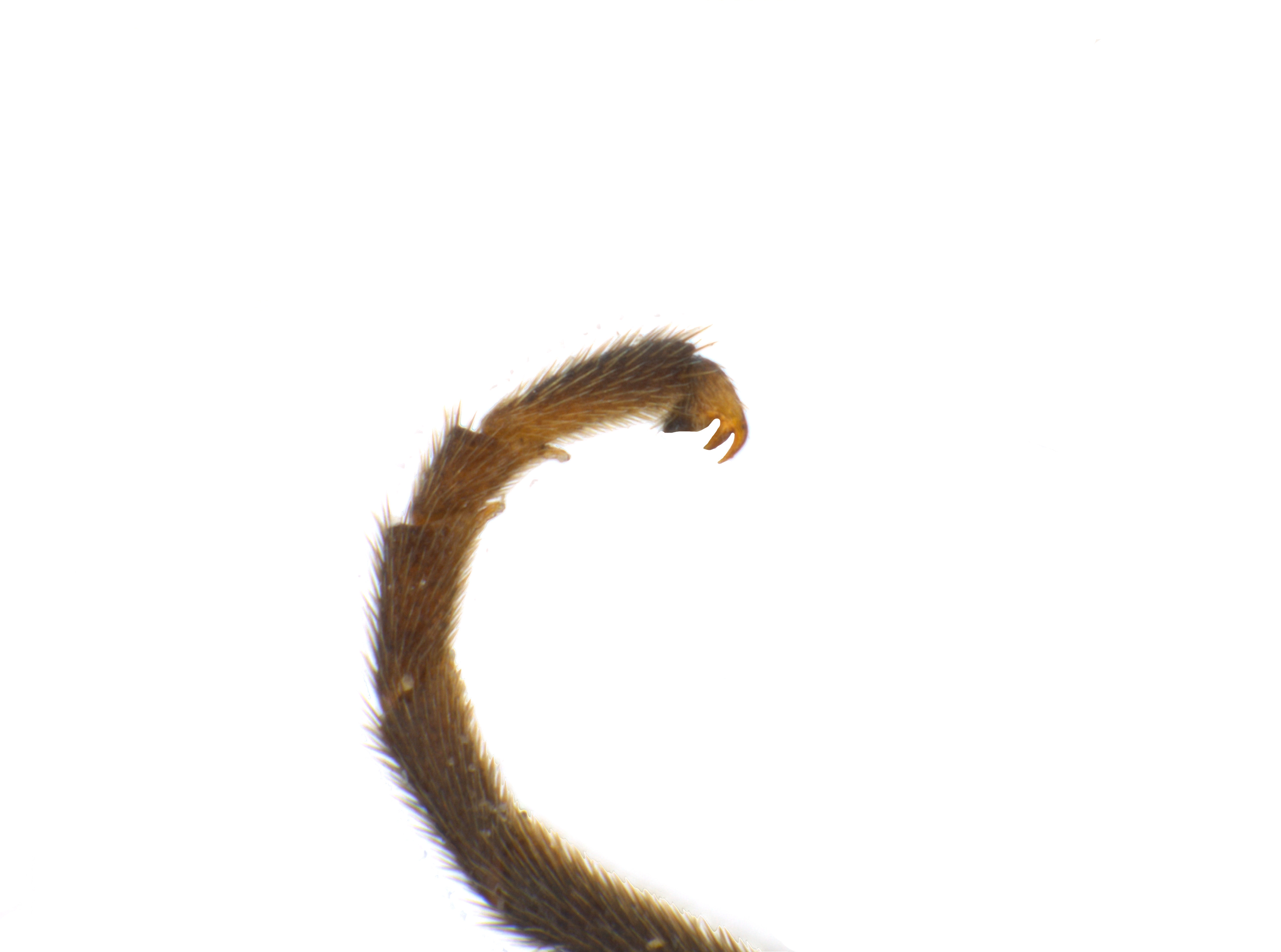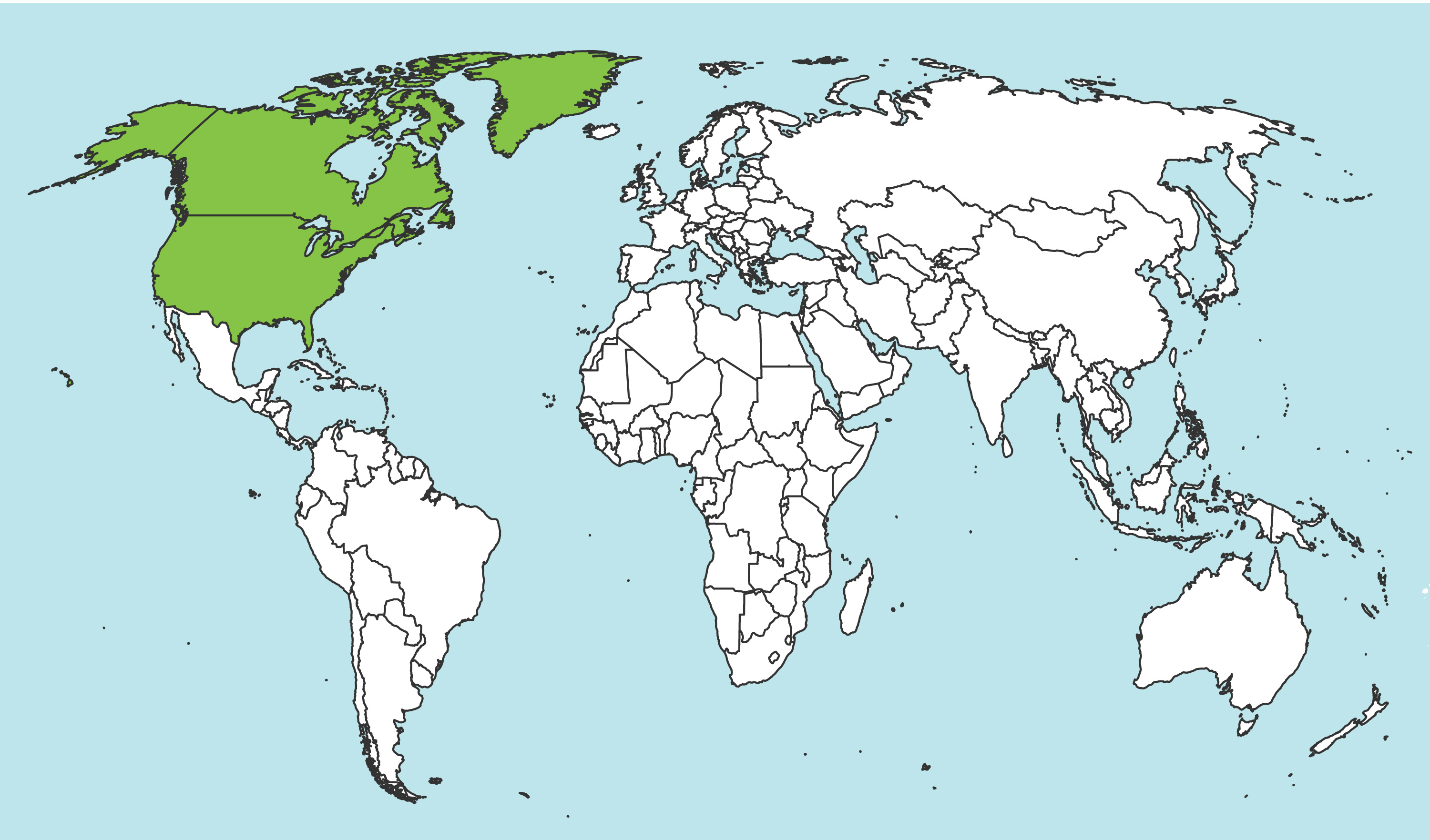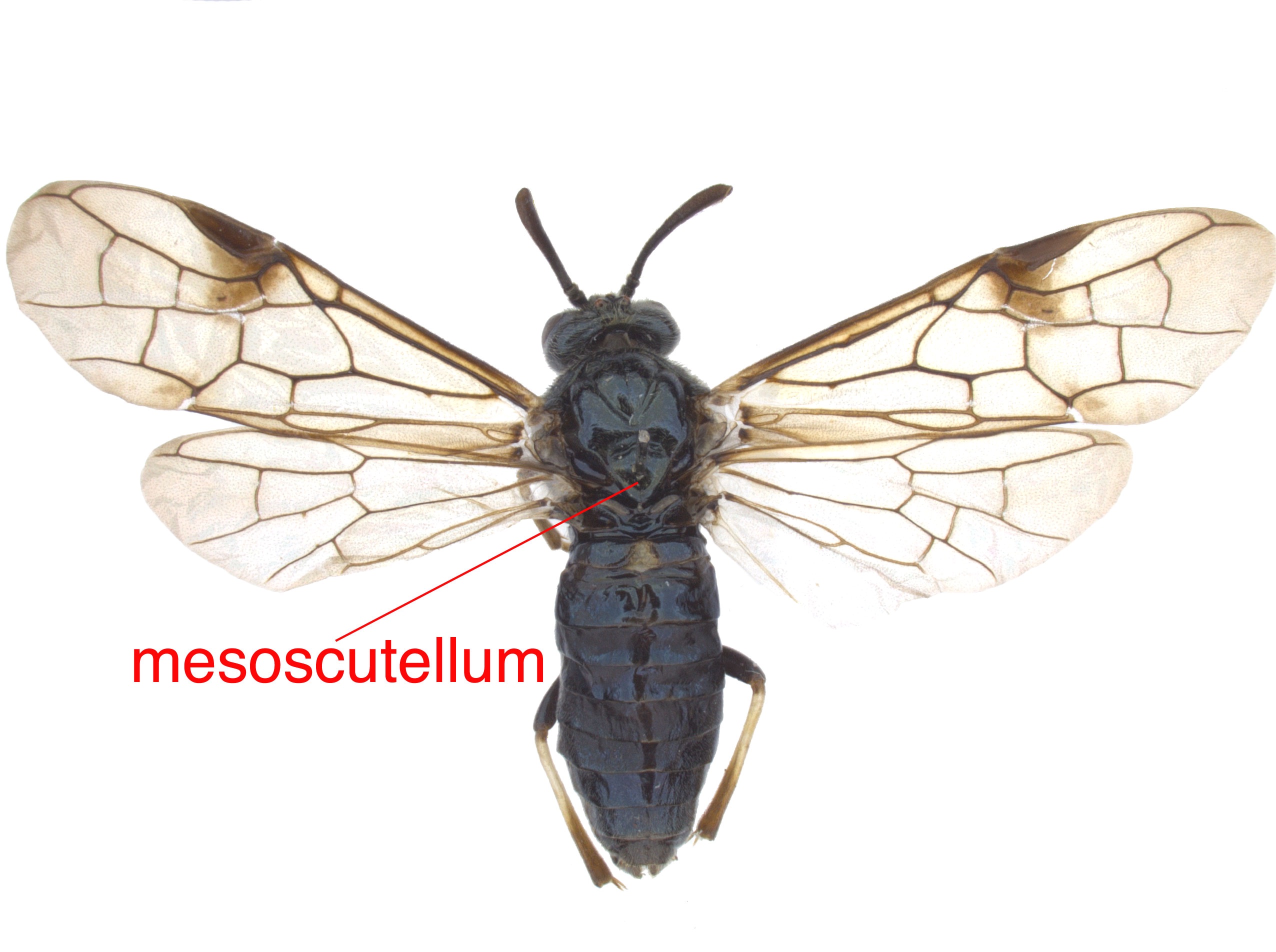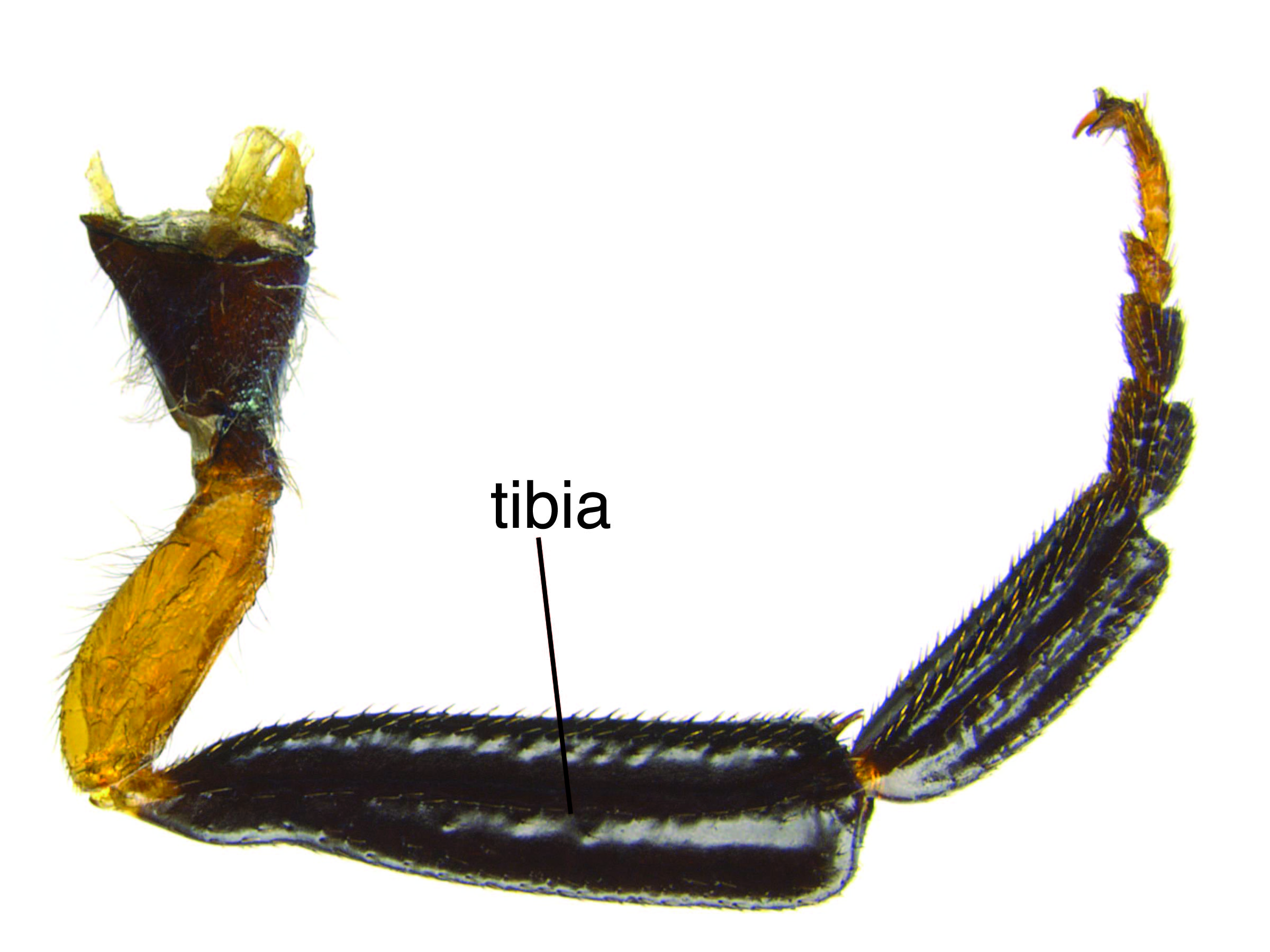Family: Tenthredinidae
Family common name: common sawflies
Subfamily: Blennocampinae
Tribe: Phymatocerini
Genus: Eutomostethus Enslin, 1914
Subgenera: none
The Tenthredinidae are the most species-rich family and are found throughout the world, in all continents but Antarctica. They are known as the “common sawflies.” They can generally be recognized by a cylindrical body and long, segmented antennaeantenna:
the sensory organ emerging from the front of the head, usually between the compound eyes and above the clypeus; includes the flagellum, scape and pedicel
 . Otherwise, they come in a variety of colors, sizes, and forms (Goulet 1992Goulet 1992:
. Otherwise, they come in a variety of colors, sizes, and forms (Goulet 1992Goulet 1992:
Goulet H. 1992. The genera and subgenera of the sawflies of Canada and Alaska: Hymenoptera. Symphyta. The insects and arachnids of Canada. Part 20. Agriculture Canada Publication.).
Sawflies in the subfamily Blennocampinae have a diverse set of life histories and habits. Many species are restricted to subtropical and tropical regions, but the genus is still fairly species-rich in North America. Blennocampinae includes many sawflies that feed on ornamental and forestry crops. This subfamily can be recognized by wing venationvenation:
the network of veins on a wing
and bidentatebidentate:
having two teeth; often used in descrbing mandibles or tarsal claws
 mandibles (Smith 1969dSmith 1969d:
mandibles (Smith 1969dSmith 1969d:
Smith DR. 1969d. Nearctic Sawflies. I. Blennocampinae: Adults and larvae (Hymenoptera: Tenthredinidae). Technical Bulletin, U.S. Department of Agriculture 1397: 1-176.).
Eutomostethus is an introduced genus represented by two species in North America. Eutomostethus ephippium and E luteiventris are about 6–6.5 mm in length and mostly black with red and yellow markings and slightly darkened wings (Smith 1969dSmith 1969d:
Smith DR. 1969d. Nearctic Sawflies. I. Blennocampinae: Adults and larvae (Hymenoptera: Tenthredinidae). Technical Bulletin, U.S. Department of Agriculture 1397: 1-176.).
There are 105 described extantextant:
in existence; opposite of extinct
species worldwide. Two species occur in North America (Taeger et al. 2010Taeger et al. 2010:
Taeger A, Blank SM, and Liston AD. 2010. World Catalog of Symphyta (Hymenoptera). Zootaxa 2580: 1-1064.).
A key to NearcticNearctic:
describing the region of the Northern Hemisphere that includes North America south through northern Mexico
 species is included in Smith 1969dSmith 1969d:
species is included in Smith 1969dSmith 1969d:
Smith DR. 1969d. Nearctic Sawflies. I. Blennocampinae: Adults and larvae (Hymenoptera: Tenthredinidae). Technical Bulletin, U.S. Department of Agriculture 1397: 1-176..
Subfamily characters
 veins Cu1 and 1m-cu between 120°–150° (Goulet 1992Goulet 1992:
veins Cu1 and 1m-cu between 120°–150° (Goulet 1992Goulet 1992: veins M and 1m-cu parallel (Smith 1969dSmith 1969d:
veins M and 1m-cu parallel (Smith 1969dSmith 1969d: veins 2A and 3A incomplete (Smith 1969dSmith 1969d:
veins 2A and 3A incomplete (Smith 1969dSmith 1969d:Genus characters
 longer than wide (Smith 1969dSmith 1969d:
longer than wide (Smith 1969dSmith 1969d: veins 2A and 3A curved at apexapex:
veins 2A and 3A curved at apexapex: (Goulet 1992Goulet 1992:
(Goulet 1992Goulet 1992: with simple spurspur:
with simple spurspur: basalbasal:
basalbasal:Eutomostethus can be confused with similar species in the subfamily Blennocampinae. It can be distinguished from most other genera by the length of the third antennal segment and from similar species Stethomostus by the simple fore tibialfore tibia:
the tibia of the fore leg
 spur and the curved apexapex:
spur and the curved apexapex:
the end or most distal area of any structure
to veins 2A and 3A of fore wingfore wing:
the anterior wing of each pair of wings; usually the largest wing of the pair
 (Smith 1969dSmith 1969d:
(Smith 1969dSmith 1969d:
Smith DR. 1969d. Nearctic Sawflies. I. Blennocampinae: Adults and larvae (Hymenoptera: Tenthredinidae). Technical Bulletin, U.S. Department of Agriculture 1397: 1-176., Goulet 1992Goulet 1992:
Goulet H. 1992. The genera and subgenera of the sawflies of Canada and Alaska: Hymenoptera. Symphyta. The insects and arachnids of Canada. Part 20. Agriculture Canada Publication.).
In China, E. longidentus is a destructive pest of Phyllostachys edulis (moso bamboo), causing severe defoliation (Maozhi et al. 1990Maozhi et al. 1990:
Maozhi W, Zhijian Z, Yonghai T, Sishan X, and Dewen S. 1990. Influnce [sic] of Eutomostethus nigritus Xiao on the growth of moso bamboo and its control. Journal of Zhejiang Forestry College 4: 5., Hua et al. 2004Hua et al. 2004:
Hua B, Xu Z, Liao L, Hu J, and Wu J. 2004. The morphology and life cycle of Eutomostethus longidentus . Kunchong zhishi 41 (6): 589-592.). Eutomostethus reticulatus is also a moso bamboo pest in China that has adapted to and shares the two-year life cycle of the host (Chen et al. 2009Chen et al. 2009:
Chen ML, Xu ZW, Lin SB, Hu JH, and Liang XM. 2009. Bionomics of Eutomostethus reticulatus . Chinese Bulletin of Entomology 46 (4): 561-564.).
Eutomostethus ephippium feeds on Poaceae species, including species of Poa (meadow grasses). Eutomostethus luteiventris feeds on species of Juncus (rushes) (Smith 1969dSmith 1969d:
Smith DR. 1969d. Nearctic Sawflies. I. Blennocampinae: Adults and larvae (Hymenoptera: Tenthredinidae). Technical Bulletin, U.S. Department of Agriculture 1397: 1-176., Macek 2014Macek 2014:
Macek J. 2014. Descriptions of larvae of the Central European Eutomostethus species (Hymenoptera: Symphyta: Tenthredinidae). Acta Entomologica Musei Nationalis Pragae 54 (2): 685-692.).
The specific biology in North America is not documented. In England, E. luteiventris larvaelarva:
the immature stage of holometabolous insects
 burrow into the stems of rushes, where they feed for the early part of their development. In the last instarinstar:
burrow into the stems of rushes, where they feed for the early part of their development. In the last instarinstar:
a stage of development between molts in insects; often is a larval stage
, the larvaelarva:
the immature stage of holometabolous insects
 emerge and feed on the leaves externally (Smith 1969dSmith 1969d:
emerge and feed on the leaves externally (Smith 1969dSmith 1969d:
Smith DR. 1969d. Nearctic Sawflies. I. Blennocampinae: Adults and larvae (Hymenoptera: Tenthredinidae). Technical Bulletin, U.S. Department of Agriculture 1397: 1-176.).
World: This genus is known from North America, throughout Europe and East Asia, and in North Africa and India (Smith 1969dSmith 1969d:
Smith DR. 1969d. Nearctic Sawflies. I. Blennocampinae: Adults and larvae (Hymenoptera: Tenthredinidae). Technical Bulletin, U.S. Department of Agriculture 1397: 1-176., Goulet 1992Goulet 1992:
Goulet H. 1992. The genera and subgenera of the sawflies of Canada and Alaska: Hymenoptera. Symphyta. The insects and arachnids of Canada. Part 20. Agriculture Canada Publication., Saini et al. 2005Saini et al. 2005:
Saini MS, Vasu V, and Smith DR. 2005. Review of the genus Eutomostethus Enslin (Hymenoptera, Tenthredinidae, Blennocampinae) from India, with new species and a key to species. Deutsche Entomologische Zeitschrift 52 (1): 139-153., Taeger et al. 2018Taeger et al. 2018:
Taeger A, Liston AD, Prous M, Groll EK, Gehroldt T, and Blank SM. 2018. ECatSymmdash;Electronic World Catalog of Symphyta (Insecta, Hymenoptera). Program version 5.0 (19 Dec 2018), data version 40 (23 Sep 2018). Senckenberg Deutsches Entomologisches Institut (SDEI), Muuml;ncheberg. https://sdei.de/ecatsym/ Accessed: 28 Jan 2020.).
North America: Eutomostethus was introduced and now both introduced species have two distinct North American ranges, one in the northeastern United States and southeastern Canada, and one in the northern West Coast, from California to British Columbia and Alberta (Smith 1969dSmith 1969d:
Smith DR. 1969d. Nearctic Sawflies. I. Blennocampinae: Adults and larvae (Hymenoptera: Tenthredinidae). Technical Bulletin, U.S. Department of Agriculture 1397: 1-176.).
Map data from: GBIF.org (29 October 2019) GBIF Occurrence Download Eutomostethus
Details about data used for maps can be found here.